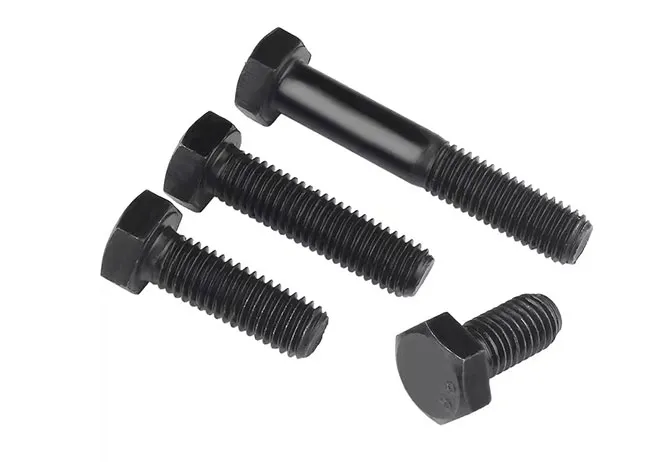316 stainless steel bolts exporters
Nov . 05, 2024 01:17 Back to list
316 stainless steel bolts exporters
Understanding 316 Stainless Steel Bolts and Their Export Market
In today’s fast-paced and industrial world, the demand for durable and corrosion-resistant materials has escalated tremendously. Among various materials, 316 stainless steel stands out as a top choice for numerous applications, particularly in marine, chemical, and food processing industries. One of the key products derived from this versatile material is 316 stainless steel bolts, which are widely used due to their remarkable properties. This article delves into the characteristics of 316 stainless steel bolts and the landscape of their exporters.
The Attributes of 316 Stainless Steel
316 stainless steel is an austenitic alloy that primarily contains chromium, nickel, and molybdenum, which significantly enhance its corrosion resistance compared to other stainless steel grades. One of the most significant distinguishing features of 316 stainless steel is its ability to withstand pitting and crevice corrosion in chlorinated environments, making it an ideal material for marine applications where saltwater exposure is common.
The addition of molybdenum gives 316 stainless steel an edge over 304 stainless steel, particularly in terms of corrosion resistance. With a higher nickel content, 316 stainless steel also demonstrates better temperature resistance, making it suitable for high-heat applications. The mechanical properties, such as tensile strength and yield strength, are well within the acceptable range for various structural applications, ensuring that 316 stainless steel bolts can endure significant stress without failure.
Applications of 316 Stainless Steel Bolts
Due to their superior properties, 316 stainless steel bolts are used in a wide array of applications. In the marine industry, they are crucial for securing components on boats and ships, where exposure to moisture and salt can lead to rapid degradation of inferior materials. In the food processing industry, these bolts are ideal for equipment and fixtures that require sanitation, as they do not harbor bacteria and are easy to clean.
Moreover, 316 stainless steel bolts are utilized in chemical processing plants, where corrosive substances are commonplace. Their ability to withstand harsh environments without rusting or degrading makes them indispensable in this sector. Other industries, such as construction, aerospace, and automotive, also frequently incorporate these high-performance bolts in their designs and assemblies.
316 stainless steel bolts exporters

The Export Market for 316 Stainless Steel Bolts
The increasing global demand for 316 stainless steel bolts has given rise to a vibrant export market. Many countries with robust manufacturing sectors are prominent exporters of these bolts, leveraging their advanced production techniques and access to high-quality raw materials. Key exporters include nations like China, the United States, Germany, and India, all of which have established themselves as leaders in stainless steel manufacturing.
The export of 316 stainless steel bolts involves navigating a complex web of regulations and standards, particularly when entering markets in Europe and North America, which often have stringent quality control measures. Exporters must ensure that their products meet international standards such as ASTM, DIN, and ISO to gain entry into these markets.
Challenges in the Export Sector
While the prospects for exporting 316 stainless steel bolts are promising, exporters face several challenges. Fluctuating raw material prices, competition from manufacturers in lower-cost regions, and changing trade policies can all impact the export landscape. Additionally, ensuring product quality and compliance with safety standards across different countries can be a daunting task for exporters.
Furthermore, the ongoing development of sustainable manufacturing practices is increasingly influencing international trade. More buyers are favoring suppliers that demonstrate eco-friendly practices, pushing exporters to adapt and incorporate sustainable methods to stay competitive.
Conclusion
In conclusion, 316 stainless steel bolts represent a crucial component in various industries, renowned for their strength, durability, and excellent corrosion resistance. The export market for these bolts is thriving, driven by global demand across multiple sectors. However, exporters must navigate various challenges, ensuring compliance with regulations while adopting sustainable practices to maintain their competitive edge. As industries continue to evolve and demand for high-quality materials increases, the significance of 316 stainless steel bolts—and the role of their exporters—will undoubtedly grow.
Latest news
-
High-Quality Panel Stud Bolt Reliable Panel Stud Bolt Factory & Suppliers
NewsJul.08,2025
-
High-Precision Fine Thread Locknuts Manufacturer & Supplier Custom Solutions
NewsJul.08,2025
-
PH Imperial Stud Bolt – High Strength Fasteners from Leading Supplier & Factory
NewsJul.07,2025
-
High-Quality Allen Wrench Bolts Leading Factory, Company & Suppliers
NewsJul.07,2025
-
Wholesale Ball Stud Bolt - High Quality Supplier & Factory Price Reliable Wholesale Ball Stud Bolt Company
NewsJul.06,2025
-
High-Strength Alloy Bolts Manufacturer & Supplier Quality Alloy Fasteners Factory
NewsJul.06,2025
